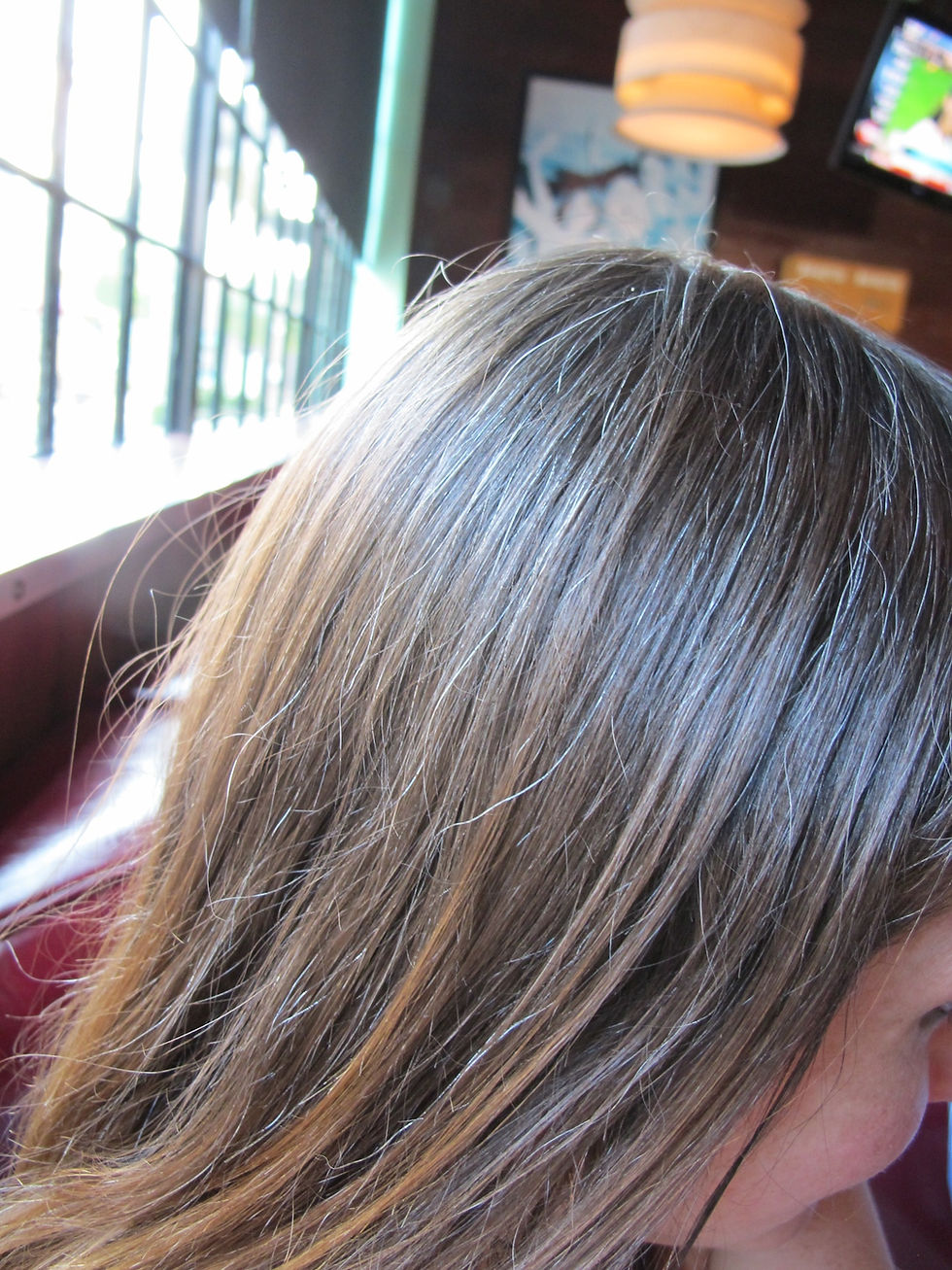C. Parasitica
- Joanne Lee
- Jan 22, 2022
- 4 min read
By Isabel Cantú

There used to be billions of American chestnut trees in the early 20th century—now there are only thousands. Of the trees that remain, they are almost completely underground, surviving only because their roots are out of reach of the horrors that await them above. Chestnut trees are particularly known for their strong, rot-resistant bark and fast-growing nature. For decades they towered above forests and provided food for a variety of species. It is natural to wonder what could cause them to decline so rapidly from their former status, and that would be the fault of the fungus Cryphonectria parasitica, or C. parasitica. After its introduction to America from Asia, it began wiping out forests of chestnut trees one after another. The fungus grows past the defenses of the bark, eating away at cambial tissues and rendering this nearly-perfect tree completely vulnerable. From there, orange spores are released to do the same to neighboring trees, cracking bark and killing tissues all over again. The cycle has pushed American chestnut trees to the brink of extinction, as any attempt at regrowth is quickly stifled by these voracious spores.
Blight is a term used to describe the browning and death of plant tissue as a result of fungal spores, and C. parasitica is the cause of the chestnut blight that has terrorized these trees for decades. Because it is classified as a bark pathogen, it will only affect the above-ground parts of a tree. They open wounds called cankers on tree bark; these cankers are spore-infected regions of the tree that eventually kill off any living tissue in the area. Chestnut trees usually respond to these infected wounds by producing epicormic shoots—shoots with healthy leaves—underneath them in an attempt to regrow. More often than not, the tree is left gnarled and scabbed, the condition of many remaining chestnut trees today.
C. parasitica is so effective because of the way it chooses to attack these American chestnut trees. Spores first enter through small cuts in the points of branches, eventually spreading to the whole tree. The larger a chestnut tree is, the more points of entry are available to these spores, and the more likely it is to become infected. Once the fungus has spread enough to establish cankers, C. parasitica begins to colonize, digging into the bark with mycelial fans and orange fungal clusters. Cutting and burning has absolutely no effect on the strength and movement of the spores, as getting rid of one tree does little to get rid of the infinitesimally small spores in the air.
It was eventually discovered that there are ways to help weaken the C. parasitica fungus through biological control—namely hypovirulence. Hypoviruses, a genus of virus, exist within the cytoplasm of fungal hosts. One species of hypovirus is called CHV-1, which has been studied well enough that we know it is particularly effective against C. parasitica. It cuts back on the strength of the fungus by reducing how much it can grow, attack, and spread. Even though it is only effective in similar strains of fungus, it offers a glimmer of hope for the American chestnut tree. CHV-1 can successfully allow chestnut trees to regrow if it infects a large enough population of C. parasitica. This is already seen in European and Asian chestnut trees, but has yet to be observed in their American counterparts.
As it stands, American chestnut trees are undergoing a life of continuous growth, attack, and death. A trepidatious growth into the open air, only to be attacked by spores and have every healthy tissue killed off. This cycle has repeated continuously for the past few decades, yet the introduction of CHV-1 into the C. parasitica strains in America may possibly bring them back. The American chestnut tree may be tied low to the ground for now, but if a large enough population of this virus is able to be restrained from within its own cytoplasm by CHV-1, these trees can slowly but surely make a revival.
Works Cited
Image Credit:
Joseph O' Brien, USDA Forest Service, https://commons.wikimedia.org/wiki/Category:Cryphonectria_parasitica#/media/File:Cryphonectria_parasitica_chestnut_blight.jpg , License: Creative Commons Legal Code
Educational Questions:
Q. How is this fungus able to pierce through the chestnut tree’s defenses?
By slipping through small wounds in a chestnut tree’s bark, C. parasitica can quickly create and infect wounds, spawn fungal growths on the bark, and split past the tree’s defenses to kill off any healthy tissues until every over-ground limb is lifeless and sunken. Because this fungus slips through tiny wounds and is able to use mycelial fans to get at the rest of the tree, regular defenses do very little to deter it.
Q. How do chestnut trees respond to the fungus’ attacks?
Once the fungus attacks, a common response is for the chestnut trees to attempt to sprout new shoots of leaves and bark underneath any infected cankers. These, unfortunately, are wiped out along with the rest of the above-ground tissues. C. parasitica’s mycelial fans are simply too good at bypassing the chemical and physical defenses that the tree presents.
Q. Is there a way to control this fungus?
To have any hope at reviving the American chestnut tree populations, we would need to introduce the CHV-1 species of hypovirus to a large enough population of C. parasitica. If successful, the infected fungus will have significantly weaker effects and will not be able to keep the American chestnut tree at near extinction.




Comments